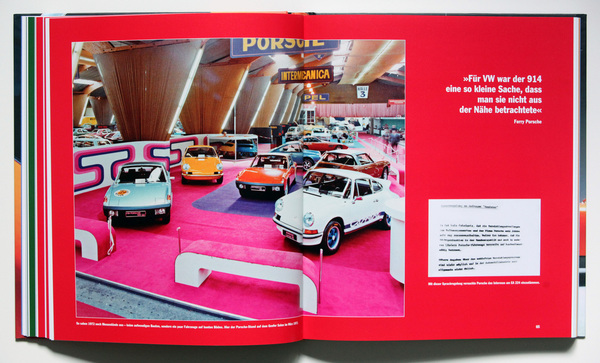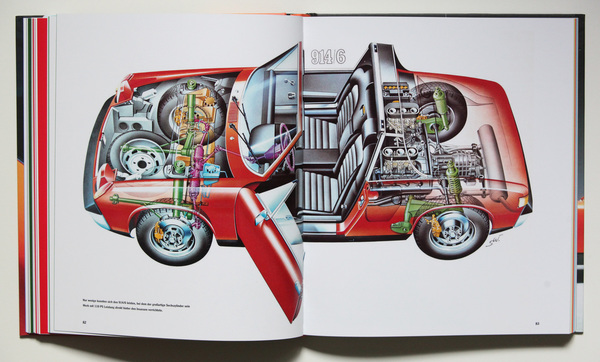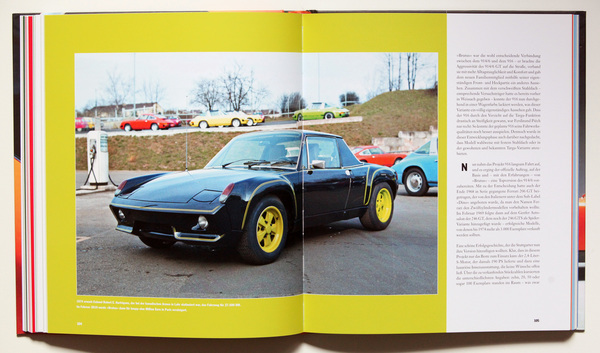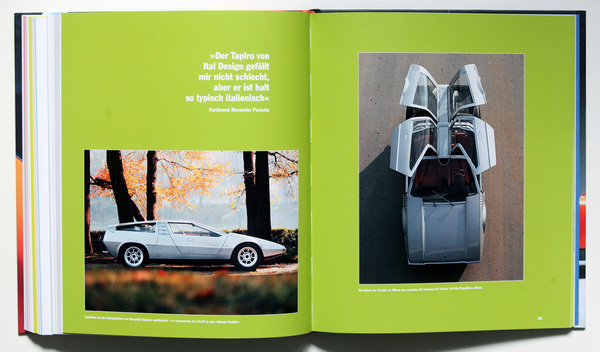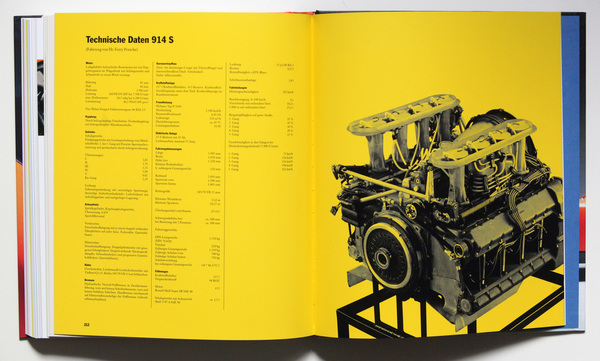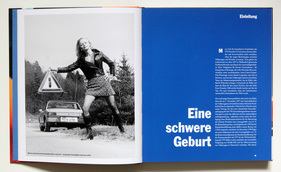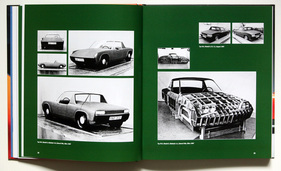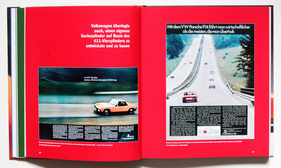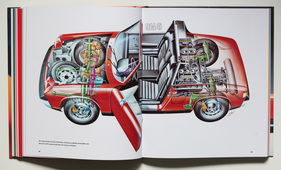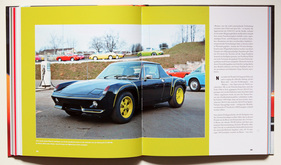Even at the presentation at the IAA 1969, opinions on the VW-Porsche 914 differed widely. Too little Porsche, too much VW - too little VW thanks to Porsche prices. Happy births are commented on differently.

If the birth was not under a good star, the further development was also rather bumpy. As Porsche was not accepted even after sporting successes, the black sheep of the VW-Porsche family eked out a niche existence in showrooms and was ultimately only really successful in the USA. No wonder. The 914 was allowed to remain a thoroughbred Porsche, even with a VW Type 4 engine. Just in time for its 50th anniversary, the Porsche Museum Edition has published a book on its history. The following lines explain whether it was a story of suffering or success.
914, the code that never really pulled
"50 years of the Porsche 914", the emphasis is on Porsche, of course the VW is excluded as far as possible in Stuttgart. A very deliberate look back at the company's own development, which increasingly slipped out of the company's hands and only a few thousand genuine Porsches - i.e. with a Porsche engine - were ever put on the road. Despite this, and thanks to generous illustrations, the book still manages to run to over 200 pages.

The author of the book is Jürgen Lewandowski, who also recorded the history of the Porsche 911 and 912. However, in contrast to these two books, the 914 book does not focus on the genesis of the vehicle until it is ready for series production, but much more on the path to the production task. From the beginning of the book, the reader is accompanied by sadness for the underestimated car, which then reaches the end of its production days in the mid-1970s at the end of the book.
A Porsche is a Porsche, a VW is a VW
Shortly after the presentation of the 911, it was clear that, in contrast to the 356, it was in a different league in terms of price. Even the 912 with its four-cylinder engine, which quickly followed, could not really shake this. An affordable entry-level model was needed. But how to pay for it. Porsche had taken over the Reutter body factory and brought the 911 onto the road as the longed-for successor to the 356. Motorsport cost money. There was no money for a low-cost entry-level model, which was to be the lightweight 914 for Porsche.
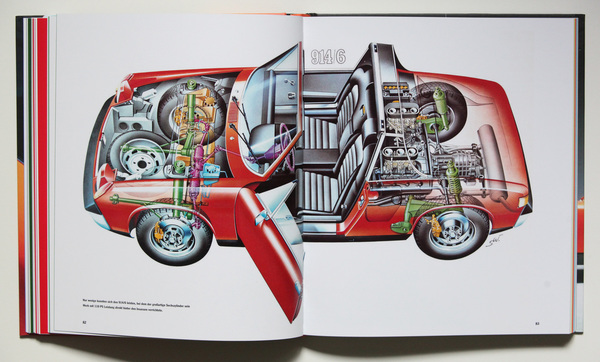
Fortunately, the ties between Stuttgart and Wolfsburg were tight. A handshake agreement was reached with VW boss Nordhoff that Porsche would develop a sports car design for VW and, in addition to remuneration for the work, would also be allowed to use the bodywork for its own purposes.
Until the unexpected death of the VW director in the spring of 1968, the world of the 914 was still in order. And just as the awarding of the contract is not clearly documented, the development history of the 914 can only be traced on the basis of a few model studies. The 914 has no predecessor model and no real successor. This makes the scant information on the history of the design all the more exciting, as an interview with Porsche Head of Design Michael Mauer and the available images from the archive nevertheless make it possible to place the car in Porsche's history.
Clear line - poorly marketed
Everything changes with the new VW boss Kurt Lotz. He needs success and glamor. Glamor should radiate more strongly from Porsche's air-cooled successes to VW. The 914 was to bear both family names as a bastard and was born as the VW-Porsche 914. The whole tragedy of this decision is clearly laid out in the book, but only those who know the history of Volkswagen in great detail can really understand the drama behind it. Thanks to intensive research at VW and Porsche, Lewandoski succeeds in delineating the main interests involved.
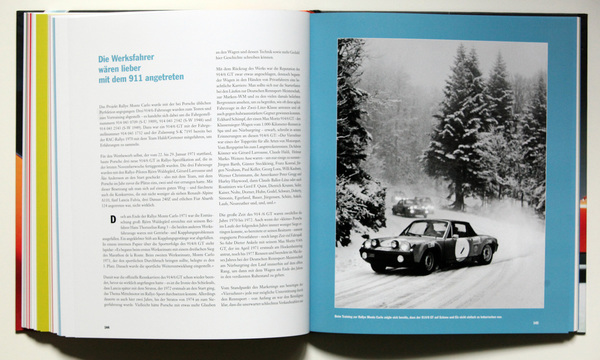
For Porsche, this decision basically means the beginning of the end of the 914's success. Porsche purists with and without Porsche (but with VW) turned up their noses at the VW logo at the rear. In terms of price, the VW wishes drove the final price ever higher and in the end the Porsche 914 was almost as expensive as the smallest 911. After three years and a few thousand units, the adventure was over for Porsche. On the Volkswagen side, however, interests in the model and homework got in the way. Auto Union had just been taken over and a second subsidiary, NSU, had also been acquired. Fortunately, this provided the company with two excellent development departments to break up the stagnation in Wolfsburg: Just five years after the VW-Porsche presentation, the model range in Wolfsburg consisted of water-cooled front-wheel drive models.
The 914 model was already a discontinued model from VW's point of view when it was presented. The fact that the VW-Porsche 914 then also made its rounds on the exhibition stands for two manufacturers was never really understood, at least in Europe. But the mistakes were on the sales side. The VW-Porsche sales company had equal representation and decisions could only be made unanimously. In the end, they usually ended up with bad compromises, which were even worse for the 914 than for those who brought them about.
However, it is also clear that the author is not familiar enough with the details of VW's history. Superficialities sometimes creep in, for example when it comes to considerations of equipping the 914 with Wankel or other Audi engines. Whining at a high level, indeed, but not a marginal issue for the connoisseur. Ultimately, the idea was to equip the Porsche 914 with the revised 1.9 liter engine from the Audi 100, which was bored out to 2 liters and given a new cylinder head. This was later used in the Porsche 924. Contexts that the book as a standard work on the 914 does not bring together.
Success story or tale of woe
The Porsche 914 was often denied its sports car potential. Yet Porsche development boss Piëch had shown right at the beginning with the Porsche 914 S that even 300 racing horsepower from the Porsche 908 would not upset the mid-engined sports car. When Porsche tried to market the weak sales at the beginning of the seventies by installing more powerful engines than the 916, it quickly became clear that the car would end up being 25% more expensive than a 911 of the same power. The main reasons for this were the manufacturing processes at Karmann and the sales strategy at VW. As a result, the Porsche 914 was only granted a short life in Europe, whereas in the USA, as a thoroughbred Porsche, it was able to achieve reasonable sales even with Volkswagen's Type 4 engines, despite the emerging stricter emissions and safety requirements, and was allowed to remain in the range until 1975.
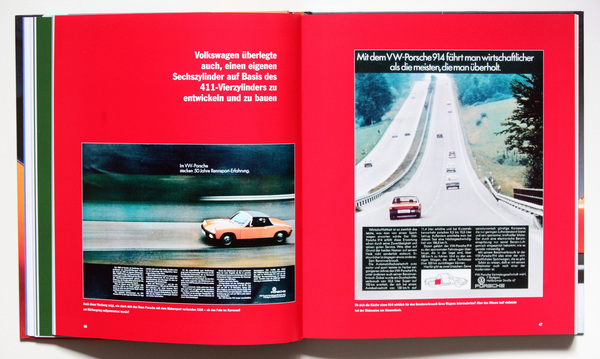
More than 100,000 units in just over five years is an impressive sales figure. The Porsche 924, with significantly better starting conditions, was unable to achieve better sales figures in the first five years. Nevertheless, the 914's success was always hampered by the suffering of its parents. The bottom line is that the model was always uninteresting for Volkswagen and never really lucrative for Porsche.
What remains in the end
"It was such a small thing that Volkswagen didn't follow it closely," summarizes Ferry Porsche in his memoirs about the 914 chapter. His view of Volkswagen's attitude probably only reflects half of the 914 chapter. But of course the question arises, what would have happened if Porsche had had a free hand with the 914? Success for an entry-level model would definitely have had to come from the price. The price list should have ended well below the 911. On the other hand, as a small-series manufacturer, Porsche was in a better position to wring a profit out of a small production run.
Unfortunately, there will never be an answer to this question. What remains is the realization that Porsche's attempt to market a more powerful and better 914/6 with the 916 was withdrawn two weeks before its presentation at the Paris Motor Show. Although VW had patronizingly conceded that the 916 could be marketed as a Porsche, the decision was made in Stuttgart: too complex, too expensive, impossible to sell in the USA due to tightening emissions legislation and also unattractive in terms of unit numbers.
All attempts to put the birth pangs behind the Porsche 914 ultimately failed due to the late and therefore disastrously defined connection to VW. Production of the 914 for the 6-cylinder Porsche ended as early as 1972. By then, Stuttgart had already turned to the water-cooled transaxle solution and invested in the future of the 924 (also commissioned by Volkswagen, nota bene) and 928. In addition, the 914 probably lost its greatest mentor at Porsche with the departure of Ferdinand Piëch. Mid-engine and plenty of power: in racing, he had calculated the formula for success; from Piëch's point of view, the 914 simply lacked the right engine.
Saving the best for last
Despite the scant material available, Jürgen Lewandowski succeeds in presenting the development history of the Porsche 914 and thus also of the VW-Porsche 914 to the reader. Particularly from a corporate history perspective, the VW-Porsche 914 is a prime example of Volkswagen's ambition to somehow leave the image of the Beetle monopolist behind, alongside the VW K 70, for example.
Even if one has to be satisfied with little compared to other Porsche books on the history of development, the thin ice is due to the special genesis of the vehicle. On the other hand, the author succeeds in presenting the further model history in detail from Porsche's point of view and in sufficient contrast to Volkswagen up to the decision to discontinue production.
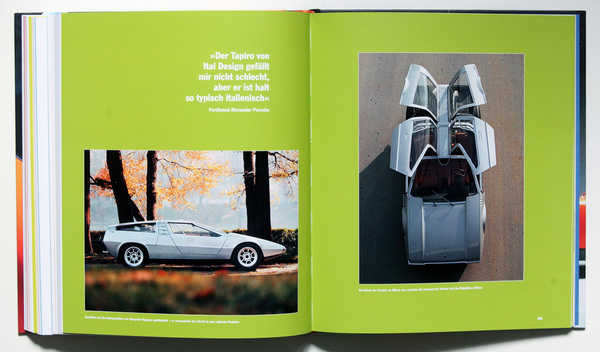
Connoisseurs know that, in contrast to the 911, there is very little literature on the 914, so this book fills a gap. And it cannot be assumed that much more can be expected.
Richly illustrated and detailing the motorsport ambitions of the 914, this anniversary book cannot hide the fact that the 914 was ultimately only an attempt. An attempt that never found a successor despite good sales figures. This makes it all the more worthwhile to take a closer look at the Porsche 914. Precisely because the vehicle may not seem to fit into the Porsche story at first glance, this book succeeds in documenting the intensive debate in Stuttgart about this model. Even if it was ultimately tragic, the EUR 49.90 is money well invested in a thoroughly researched book.
Bibliographical details
- Title: 50 years of the Porsche 914
- Author: Jürgen Lewandowski
- Language: German
- Publisher: Delius Klasing
- Edition: 1st edition 2019
- Format: Hardcover, 232 x 271 mm
- Size: 224 pages, 190 photos and illustrations
- ISBN: 978-3-667-11586-7
- Price: EUR 49,90,
- Order/buy: Online at amazon.de, at delius-klasing.de or in well-assorted bookstores




